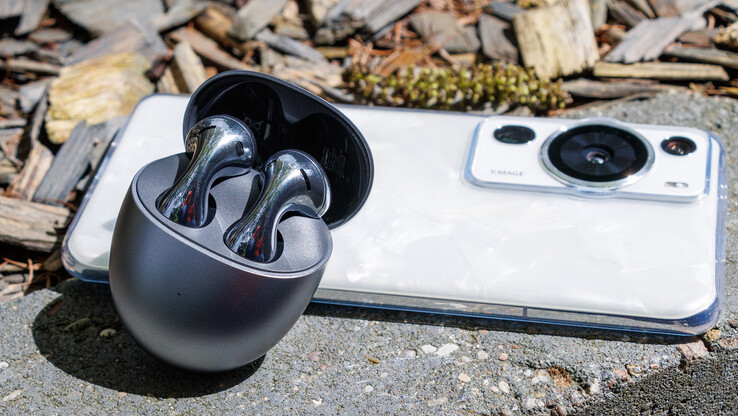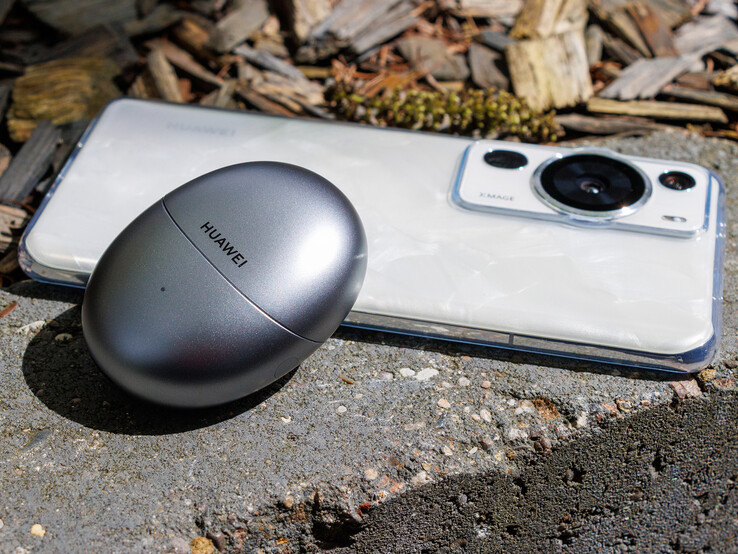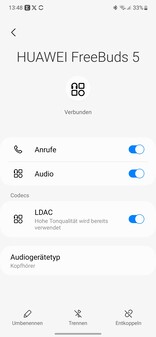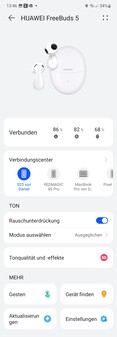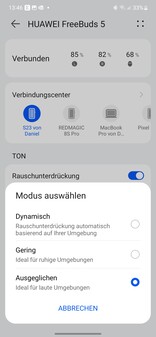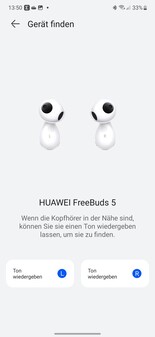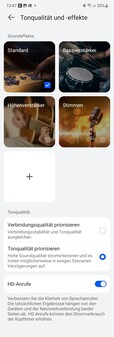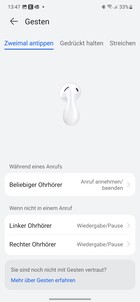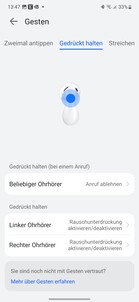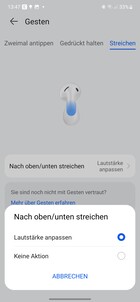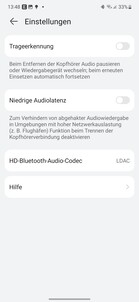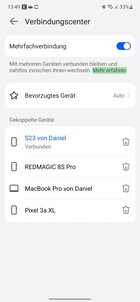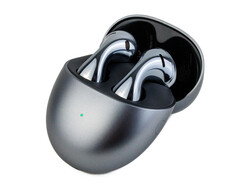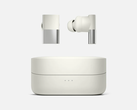Huawei FreeBuds 5 review - Comfy in-ears with good sound
The Huawei FreeBuds 5 are the direct successors of the FreeBuds 4 and the big brother of the cheaper FreeBuds 5i. This year, Huawei puts an exclamation mark, especially with the unusual design, but also holds on to old virtues. Thus, the FreeBuds 5 are again hooked into the ear cup instead of being inserted into the ear canal and still want to offer powerful active noise cancellation (ANC). In addition, the True Wireless Headset (TWS) offers IP certification and supports a wide range of audio codecs for Bluetooth.
Specifications
| Wearing style | In-ear |
| Connectivity | Bluetooth 5.2 |
| Range | up to 10 meters |
| Speakers | 11 mm dynamic dual-magnetic driver unit, 16 - 40000 Hz (effective frequency range) |
| Audio codecs | SBC, AAC, L2HC 2.0, LDAC, LC3 |
| Battery power | 42 mAh (each earphone), 505 mAh (charging case) |
| Charging port | USB-C |
| wireless charging | yes (Qi) |
| Weight | 5.4 grams (per earphone), 45 grams (charging case) |
| Firmware version | HarmonyOS 3.0.0.152 |
| Scope of delivery | headphones, charging case, ear tips (sizes: S, M, L) |
| Price (MSRP) | 159 Euro |
Case and ergonomics - FreeBuds 5 available in three colors
The charging case of the Huawei FreeBuds 5 already has a striking shape, which is reminiscent of a smoothly polished stone. The earphones are extravagantly shaped and look organic. The FreeBuds 5 are made of plastic and have a high-quality build. There is nothing to complain about. The headphones are available in white, silver, and orange.
Rainwater need not be feared by the wearer, as the earphones are protected against splashing water according to IPX4. The ergonomics are very appealing and unlike many other in-ears, the FreeBuds 5 are not inserted in the external ear canal, but between the tragus and antitragus of the pinna. Huawei refers to this as the Open-Fit. Unlike the FreeBuds 4, they have a better fit there, so sports are also possible with them, depending on the shape of the user's ear.
Equipment and operation - With LC3 for Windows
Setting up the Huawei FreeBuds 5 is easiest on a smartphone from the manufacturer, provided it has at least EMUI 10 or Harmony OS 2.0 installed. In this case, the smartphone or tablet offers to pair the headphones directly via a pop-up, similar to Google Fast Pair. Windows also directly recognizes the pairing-ready TWS. For other Android or Apple devices, pairing must be done manually, which is also quick. If you want to configure the FreeBuds 5 and install updates, you should download the AI Life app. It is available in Apple's App Store, Huawei's AppGallery, and Google Android users can download it via the QR code on the packaging or via Huawei's homepage.
In the app, the wear detection can be turned on or off, updates can be installed, or the touch controls can be adjusted to the user's needs. Settings for the equalizer and ANC can also be found there. Those who pair multiple devices with the FreeBuds 5 will appreciate the connection center, which can be used to quickly switch to another, already paired device or to manage them. Thanks to dual Bluetooth, two devices, for example, a computer and a smartphone, can remain permanently connected to the headphones. If you ever lose an earphone, you can use the search function. A loud ringing is played on the selected earbud to track it down acoustically.
Huawei's FreeBuds 5 can be controlled via the smartphone, and also by touch via the integrated sensor surfaces on the earbuds. This works flawlessly in the test and does not require much practice. The headphones can also be used separately.
Sound - More audio codecs for the FreeBuds 5
Huawei's FreeBuds 5 now support the high-resolution LDAC codec for Bluetooth and want to transport audio content to the receiver in the highest possible resolution. This is only possible with Android devices since neither Microsoft nor Apple natively support Sony's codec. However, the new LC3 codec is on board for Windows 11, which is also more powerful than the conventional SBC. The frequency range of the 11 mm drivers is again from 16 to 40,000 Hz.
Huawei's headphones are convincing and deliver a very balanced sound for in-ears and are at least one class better than the cheaper FreeBuds 5i. The FreeBuds 5 are more balanced than their predecessors in music playback and the low tones are audibly more present, even though the trebles are still stronger. Music in particular loses some of its impact, which is not changed by the bass equalizer, which rather implements a permanent background hum. Movies are also a pleasure with the headphones and there are no distortions even in loud action sequences.
Users who use the FreeBuds 5 on the phone will be pleasantly surprised because the voice pickup is very clear and natural, and minor noise is reliably filtered out. The latter succeeds even in moderate road traffic.
There is practically no passive noise shielding and the ANC is noticeable, but only dampens the ambient noise to a minor extent. Fan noise or the hum of a refrigerator is completely eliminated by the FreeBuds 5, but a quite distinct ANC noise is audible.
| Loudspeakers | |
| THD | |
| Jabra Elite 5 (RMS: -2.9 dBFS) | |
| Huawei FreeBuds 5 (RMS: -2.8 dBFS) | |
| Huawei FreeBuds 5i (RMS: -2.4 dBFS) | |
| THD+N | |
| Jabra Elite 5 (RMS: -2.9 dBFS) | |
| Huawei FreeBuds 5 (RMS: -2.8 dBFS) | |
| Huawei FreeBuds 5i (RMS: -2.4 dBFS) | |
* ... smaller is better
THD (Total Harmonic Distortion): Harmonic distortion quantifies the magnitude of the components that arise due to non-linear distortion (harmonic content) in relation to the original signal. THD only refers to the fundamental component. The distortion factor is often mentioned in the same breath but refers to the total signal.
THD+N (Total Harmonic Distortion + Noise): This value is comparable to THD, but in addition to the harmonic distortion, that of the noise is measured as an RMS value.
For the measurement, a low-harmonic sinusoidal signal (1 kHz, > 0 dB) is reproduced via the headphones to be tested, which is recorded by a linear measurement microphone (measurement distance: approx. 1 cm) in an artificial head.
Both values are given as a percentage. The lower the value, the better the signal fidelity.
Huawei FreeBuds 5 audio analysis
(+) | speakers can play relatively loud (87 dB)
Bass 100 - 315 Hz
(±) | reduced bass - on average 8.4% lower than median
(+) | bass is linear (2.1% delta to prev. frequency)
Mids 400 - 2000 Hz
(±) | reduced mids - on average 5.7% lower than median
(+) | mids are linear (5.3% delta to prev. frequency)
Highs 2 - 16 kHz
(-) | very high highs - on average 15.4% higher than median
(+) | highs are linear (4.8% delta to prev. frequency)
Overall 100 - 16.000 Hz
(±) | linearity of overall sound is average (20.4% difference to median)
Compared to same class
» 53% of all tested devices in this class were better, 8% similar, 39% worse
» The best had a delta of 4%, average was 24%, worst was 134%
Compared to all devices tested
» 53% of all tested devices were better, 8% similar, 39% worse
» The best had a delta of 4%, average was 24%, worst was 134%
Jabra Elite 5 audio analysis
(+) | speakers can play relatively loud (91.7 dB)
Bass 100 - 315 Hz
(-) | nearly no bass - on average 19.9% lower than median
(+) | bass is linear (5.6% delta to prev. frequency)
Mids 400 - 2000 Hz
(±) | reduced mids - on average 10.8% lower than median
(±) | linearity of mids is average (8.3% delta to prev. frequency)
Highs 2 - 16 kHz
(±) | higher highs - on average 12.8% higher than median
(±) | linearity of highs is average (9% delta to prev. frequency)
Overall 100 - 16.000 Hz
(±) | linearity of overall sound is average (26.2% difference to median)
Compared to same class
» 80% of all tested devices in this class were better, 4% similar, 16% worse
» The best had a delta of 4%, average was 24%, worst was 134%
Compared to all devices tested
» 80% of all tested devices were better, 4% similar, 16% worse
» The best had a delta of 4%, average was 24%, worst was 134%
Battery runtimes - Up to 30 hours of music enjoyment should be possible
Huawei talks about up to 30 hours of music playback, but neither LDAC nor ANC is active and the additional charges from the charging case are included. Huawei states a runtime of 3.5 hours for a single charge with activated ANC for the FreeBuds 5, and half an hour less for phone calls.
In our test, with an adjusted volume of 65 db(A), activated ANC, and LDAC, we even achieved a slightly longer playback time of almost four hours.
| Battery Runtime - Spotify loop at 65dB/A (incl ANC) | |
| Jabra Elite 5 | |
| Huawei FreeBuds 5 | |
| Huawei FreeBuds 5i | |
Verdict - FreeBuds 5 turn out to be strong in-ears
With the Huawei FreeBuds 5 follow on the FreeBuds 4 not only technically improved TWS headphones, but they are also a real eye-catcher. It is also positive that Huawei sticks to the open-fit design, which is almost a unique selling point.
The Huawei FreeBuds 5 convince with an extraordinary look, high wearing comfort, and good sound.
The FreeBuds 5 have also improved technically and now support significantly more audio codecs for Bluetooth. With LDAC, a broader sound quality is possible for Android devices, even though the small drivers certainly cannot exploit this to the full. Nevertheless, an audible difference is noticeable - provided that the content is of high quality. LC3 is also on board for Windows 11.
The active noise suppression is usable on the train, but hopelessly overtaxed in airplanes, where in-ear solutions have an advantage due to their passive shielding. But in the office or at home, annoying humming noises are reliably eliminated without the need for a bulky headset.
If you need better ANC, you should check out the Galaxy Buds2; more runtime is available, among others, with the Jabra Elite 5.
Price and availability
The Huawei FreeBuds 5 are available directly from Huawei for 139 Euros (~$150) at the time of this review.
Transparency
The selection of devices to be reviewed is made by our editorial team. The test sample was given to the author by the manufacturer free of charge for the purposes of review. There was no third-party influence on this review, nor did the manufacturer receive a copy of this review before publication. There was no obligation to publish this review. As an independent media company, Notebookcheck is not subjected to the authority of manufacturers, retailers or publishers.
This is how Notebookcheck is testing
Every year, Notebookcheck independently reviews hundreds of laptops and smartphones using standardized procedures to ensure that all results are comparable. We have continuously developed our test methods for around 20 years and set industry standards in the process. In our test labs, high-quality measuring equipment is utilized by experienced technicians and editors. These tests involve a multi-stage validation process. Our complex rating system is based on hundreds of well-founded measurements and benchmarks, which maintains objectivity. Further information on our test methods can be found here.


